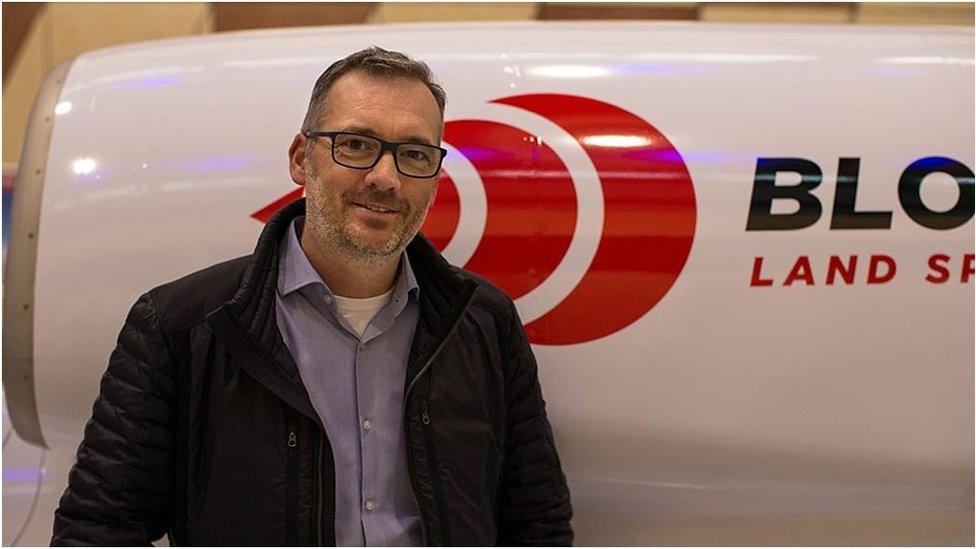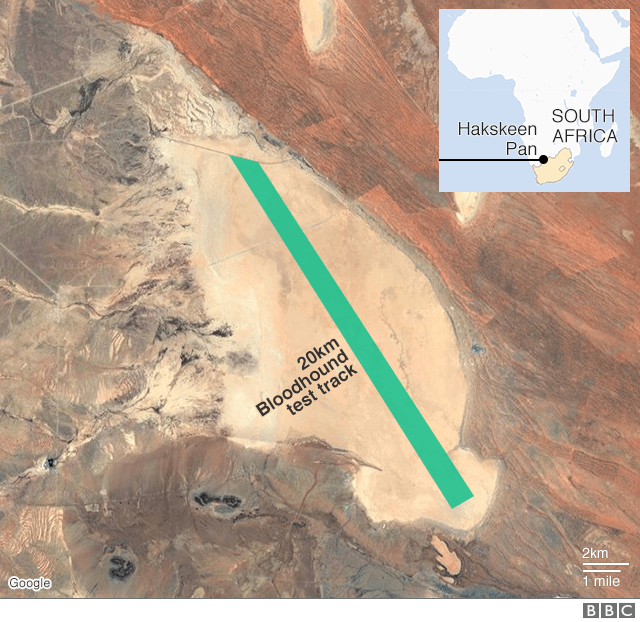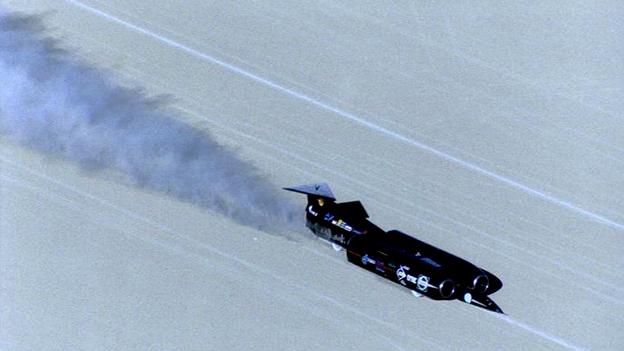Bloodhound car: A month to save land speed record project
- Published
The BBC's Andrew Harding made a film about last year's trials
The UK-led bid to break the world land speed record is under threat once more.
Ian Warhurst, who owns the Bloodhound car that's been built to go beyond 800mph (1,290km/h), says new money must come into the project this month or it will be wound up.
Bloodhound clocked 628mph (1,010km/h) in trials last year while powered only by a jet engine.
With the addition of a rocket, the vehicle should easily beat the existing world record of 763mph (1,228km/h).
That won't happen, though, says the Yorkshire businessman, unless the financing is there to support it.
Mr Warhurst rescued Bloodhound from administration at the end of 2018 but said at the time he would only use his own cash to take the project through the recent demonstration trials. It would then require other individuals or corporates to come in with the backing to finish the job. He thinks about £8m should do it.
"We've shown what this car can do and there's been huge support for it. But although I've had lots of conversations with people who are interested in taking it on, we haven't yet been able to get the money on the table," the automotive engineer told BBC News.
"We really need to do that in the next month because of the timescales we're operating to."

Ian Warhurst paid for the recent trials out of his own pocket
The £8m would cover the last elements of the rocket's development and the work needed to prepare and run the car on its bespoke race track on Hakskeen Pan, a dried out lakebed in South Africa's Kalahari Desert.
The aim is to try to break the land speed record during the pan's dry, cool months from July to August 2021. But that means kickstarting the final push no later than June this year.
"I reckon there's about a year's worth of work to get the car ready, so we need to get going in the next few months," Mr Warhurst explained. "After we came back from South Africa at the end of last year, we let team members take up other contracts. But we need now to give them certainty if we're to ask them to come back."
The businessman said the general public's interest in the Gloucestershire-based project had been immense. Independent analysis of the media coverage showed any sponsors involved in the South African trials could have received a 14:1 return on their investment, he claimed.


The privately funded Bloodhound project was launched in 2008 by then science minister and car racer Lord Paul Drayson as a "vehicle" to get schoolchildren engaged in science, technology, engineering and mathematics (STEM) subjects.
An education charity has been operating in tandem with the development programme, using model rocket cars to teach fundamental concepts such as Newtonian laws.
Bloodhound was designed to run with a Eurofighter-Typhoon EJ200 jet engine in unison with a rocket.
Rolls-Royce supplies the turbofan and the Norwegian aerospace company Nammo is poised to provide the booster.
The speeds Bloodhound achieved last year using just the EJ200 power unit put it in a select group of only eight cars to run faster than 600mph - Sonic 1, Blue Flame, Thrust2, Budweiser Rocket, Sonic Arrow, Aussie Invader III, and Thrust SSC.
It is Thrust SSC which set the existing land speed record in 1997. Its driver was Andy Green. The former RAF pilot is also the driver in Bloodhound.

Thrust SSC's all-time record was set in America's Black Rock Desert is 1997


Jonathan.Amos-INTERNET@bbc.co.uk, external and follow me on Twitter: @BBCAmos, external